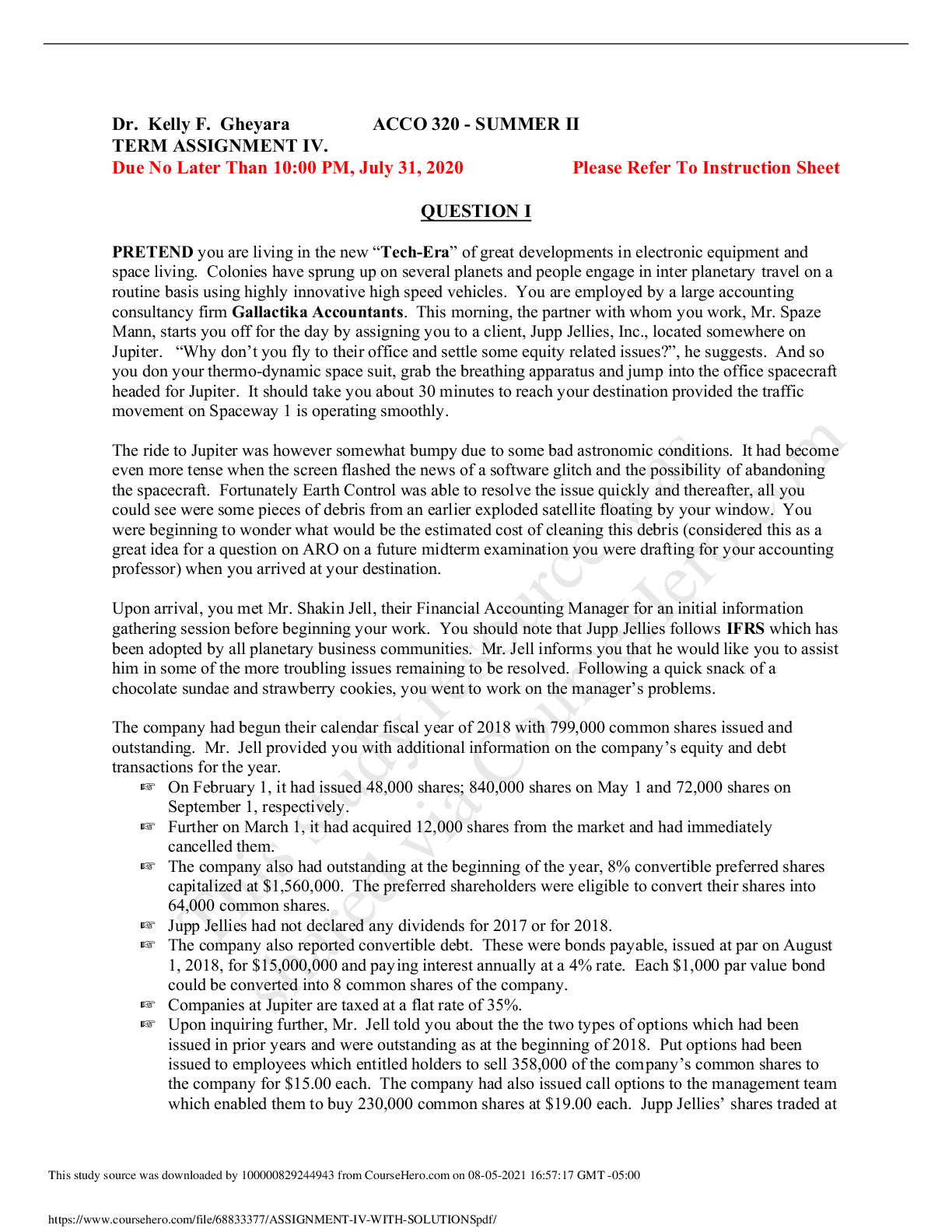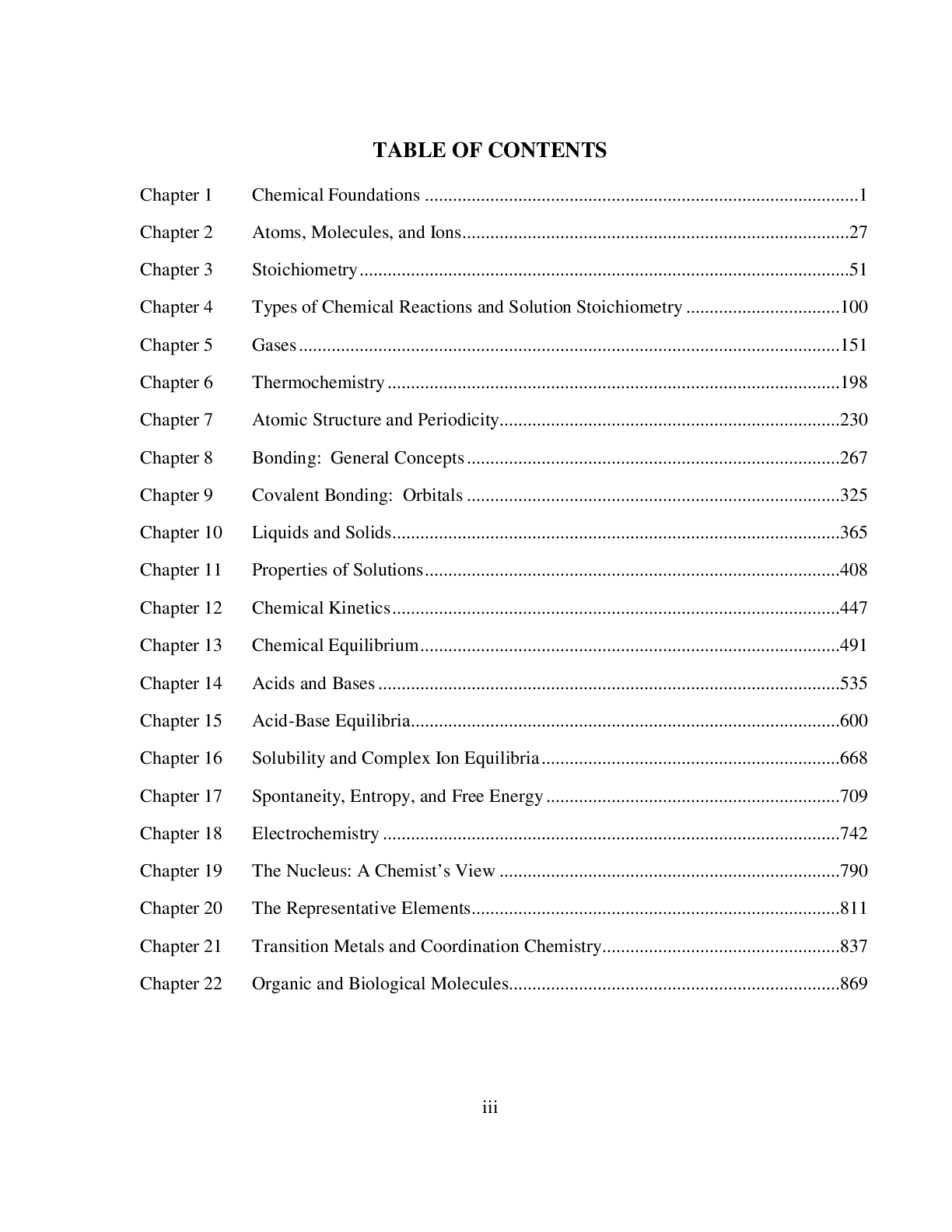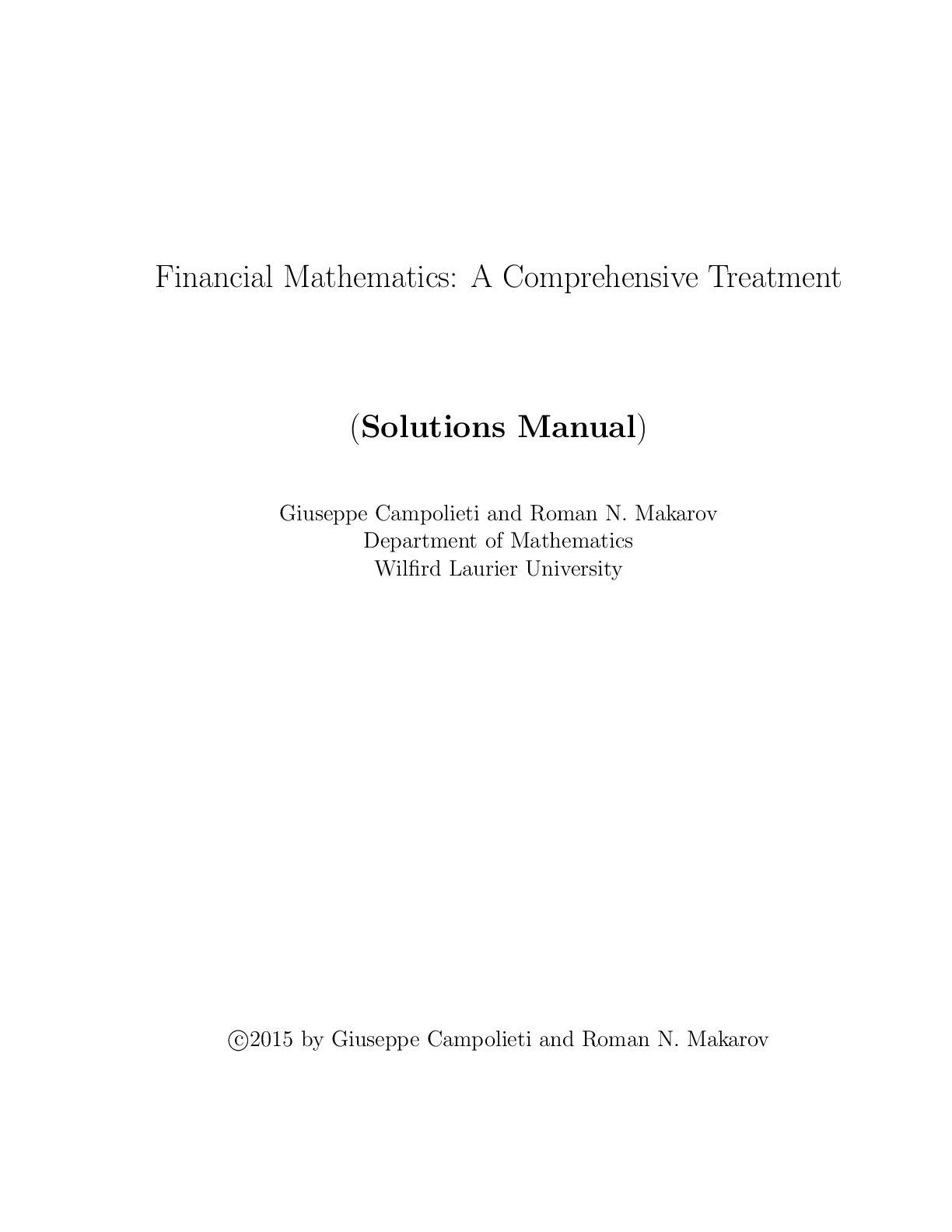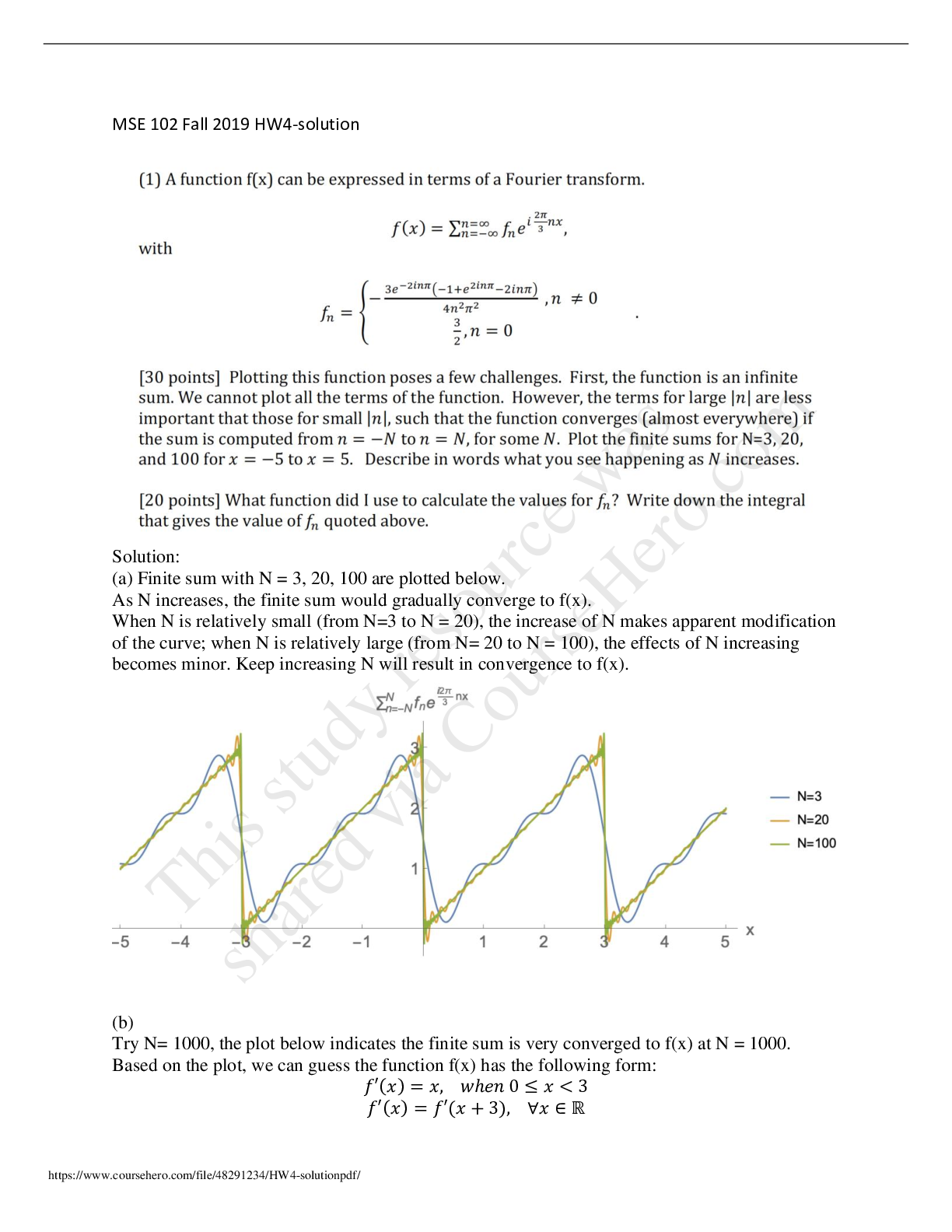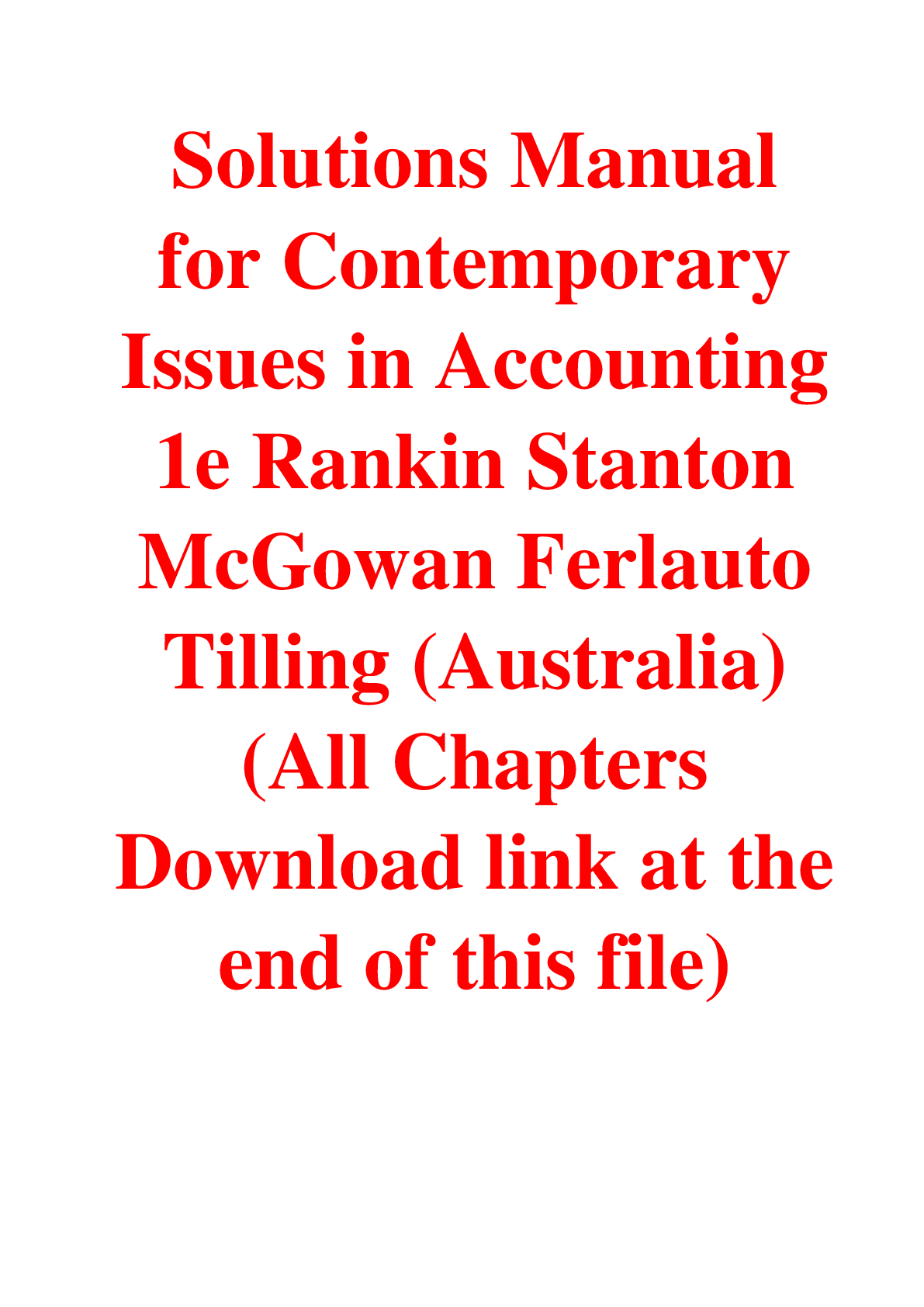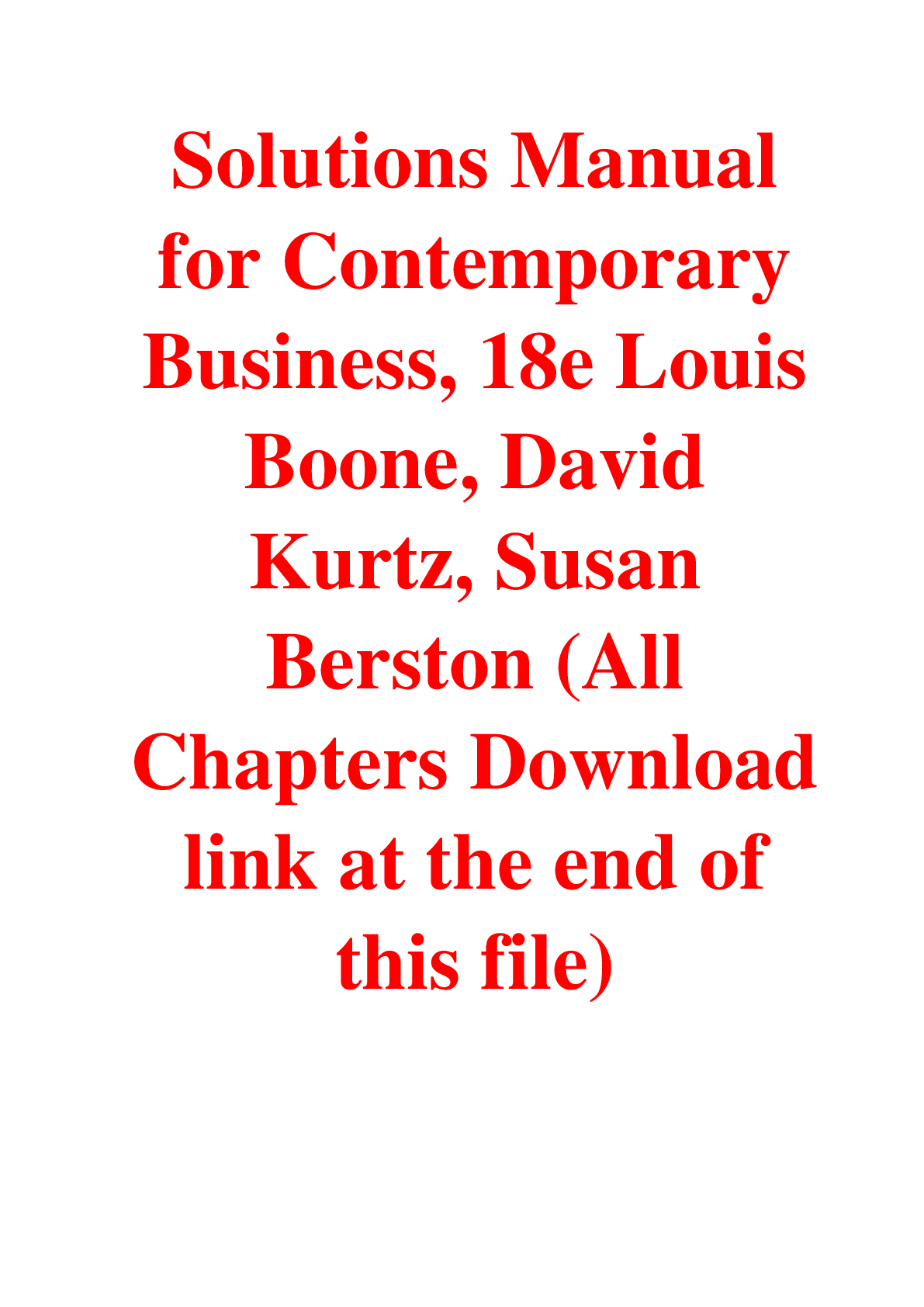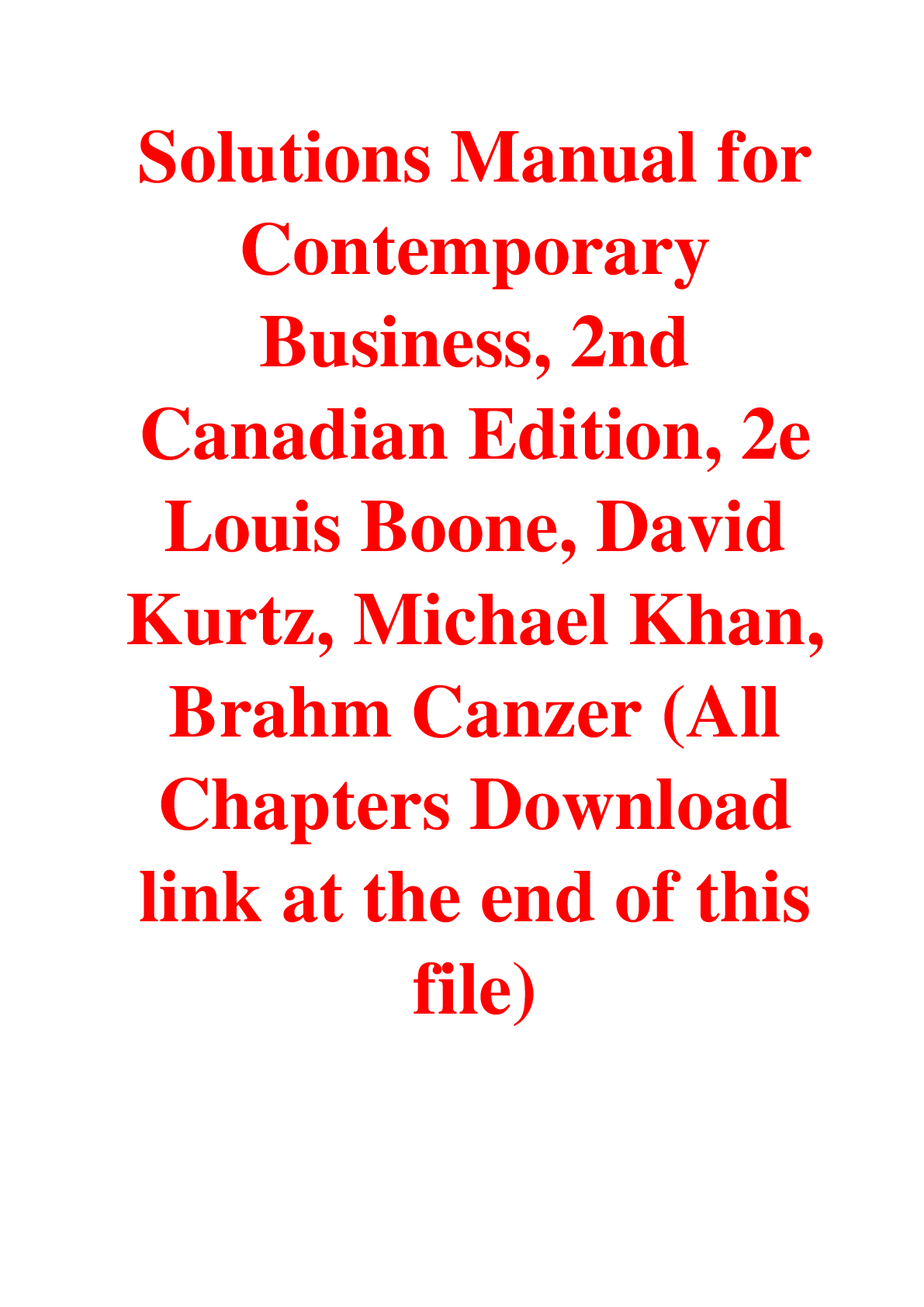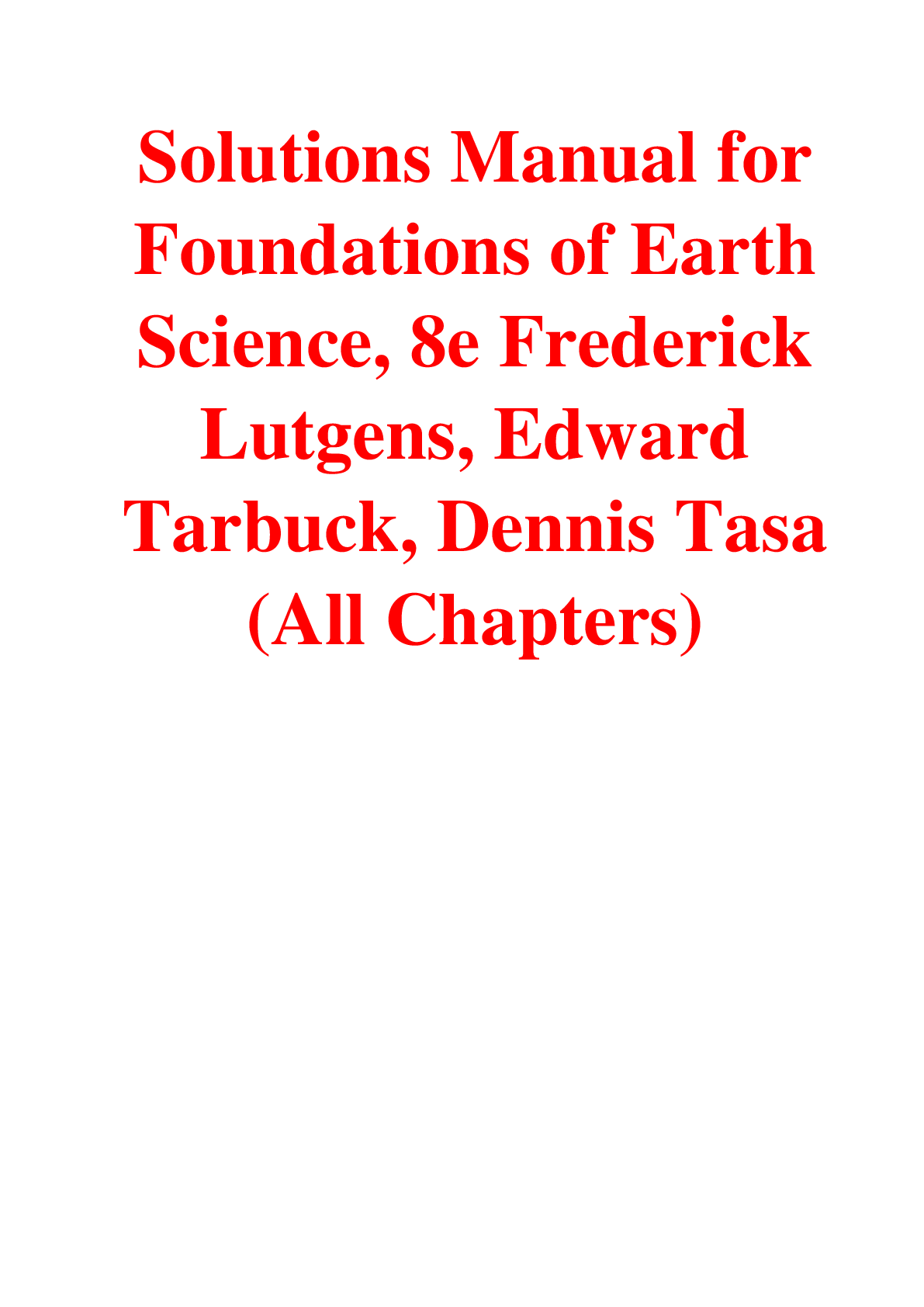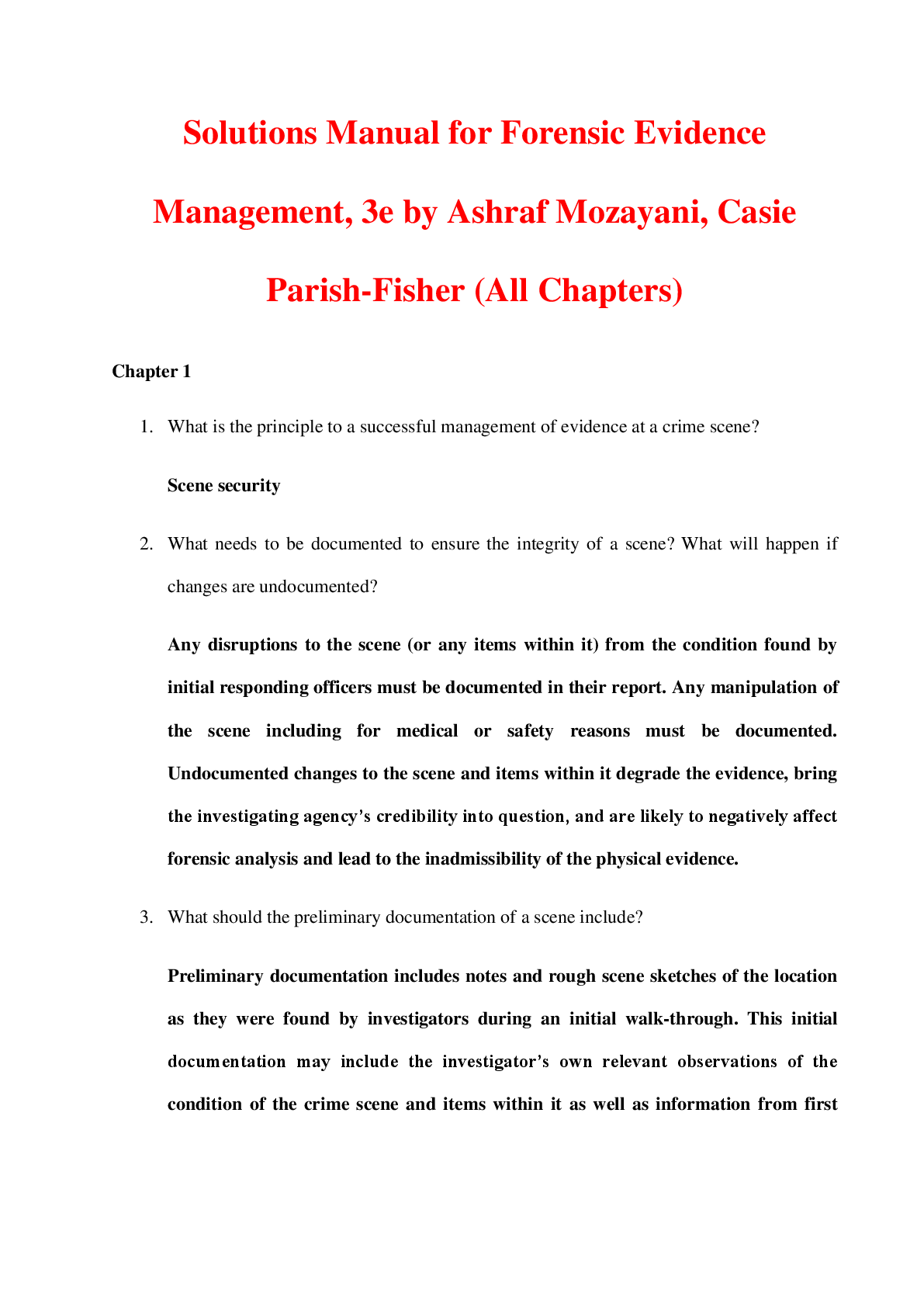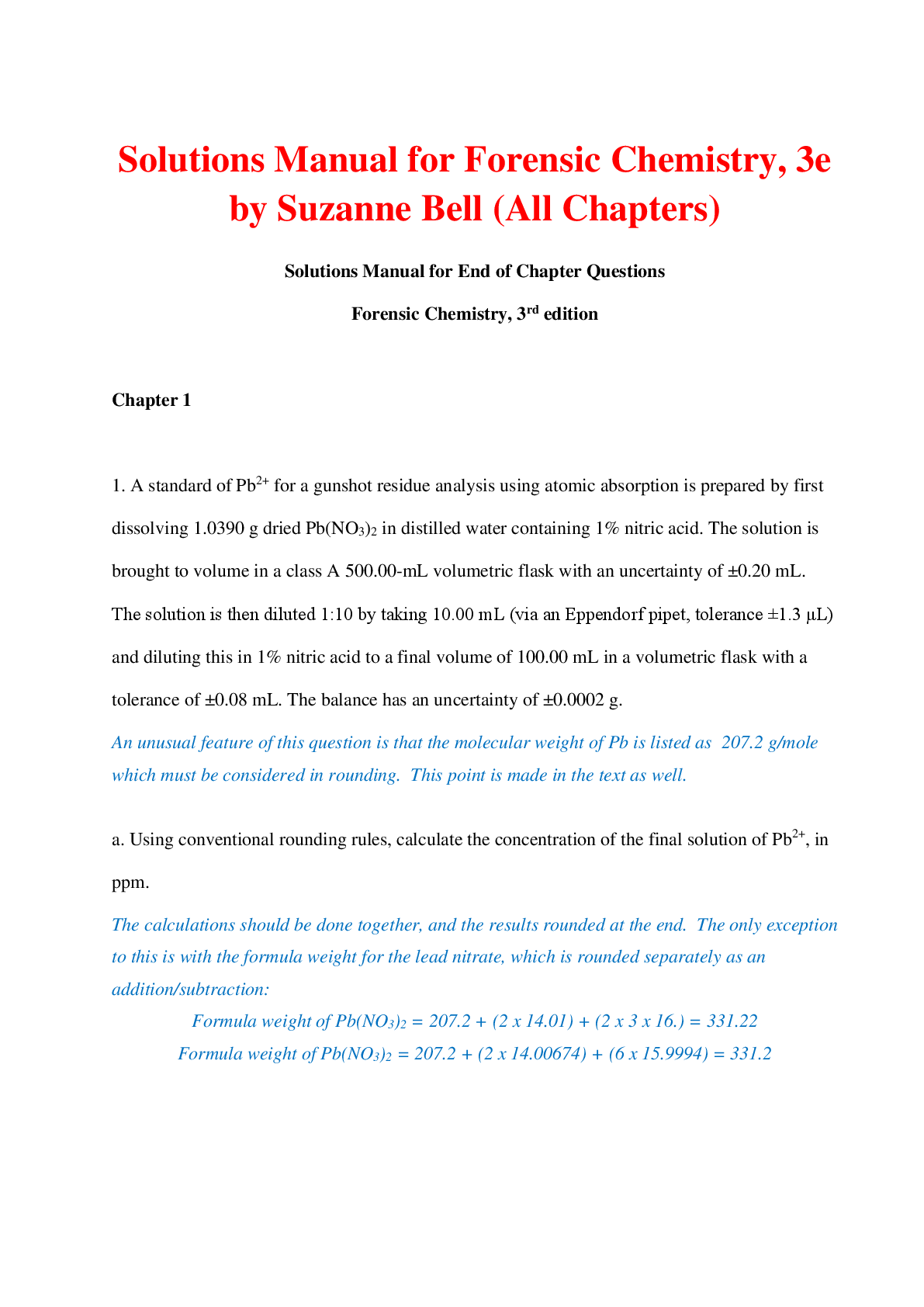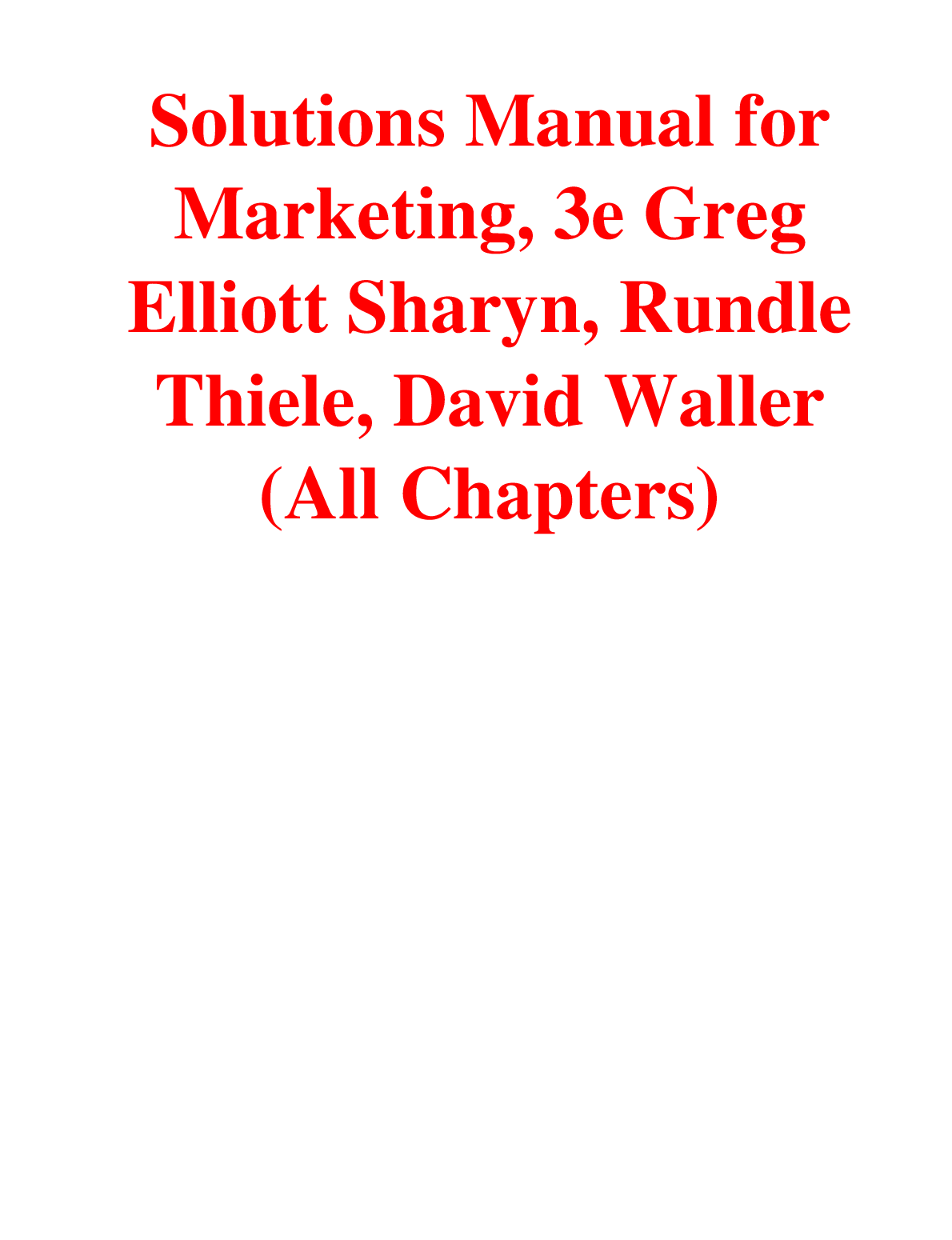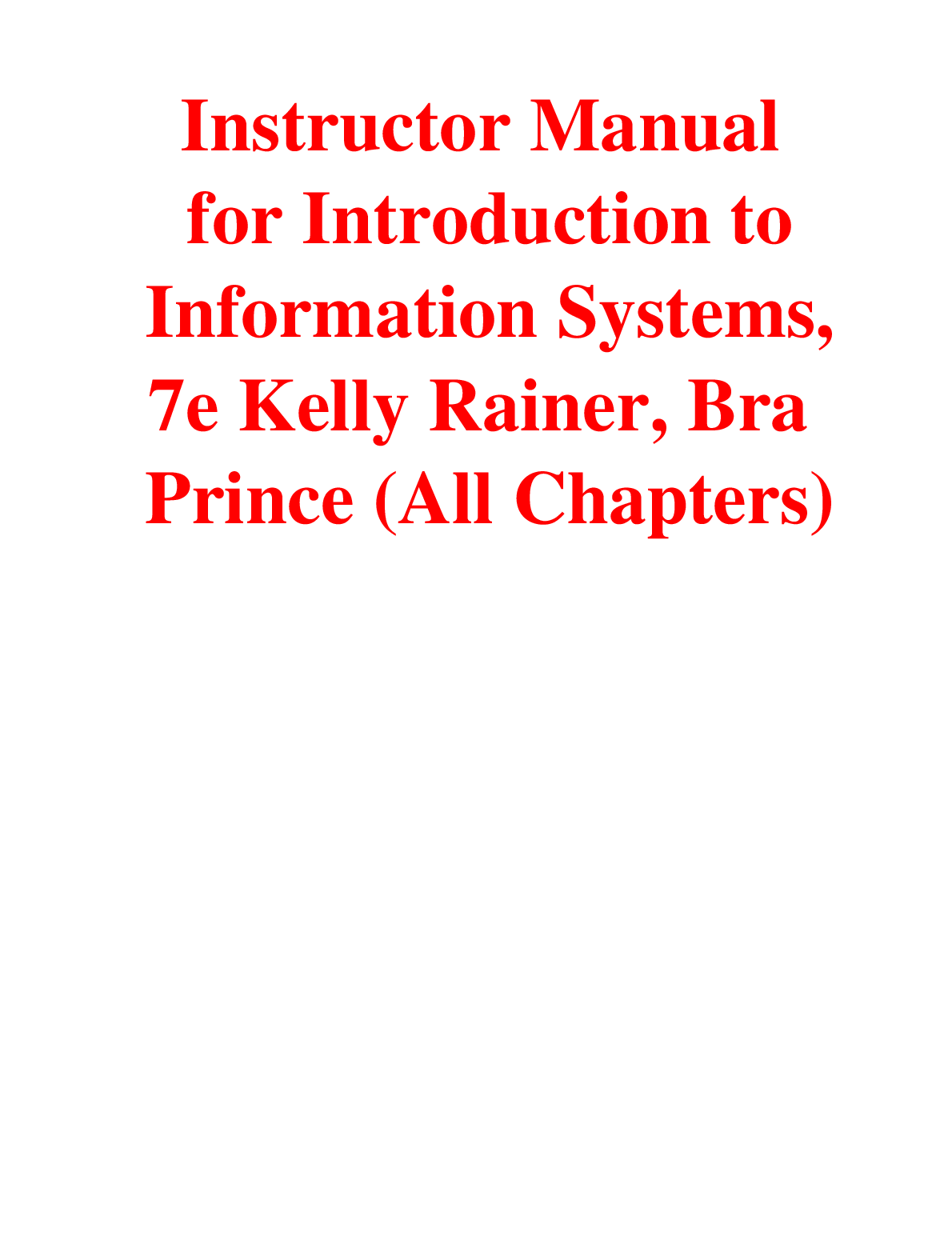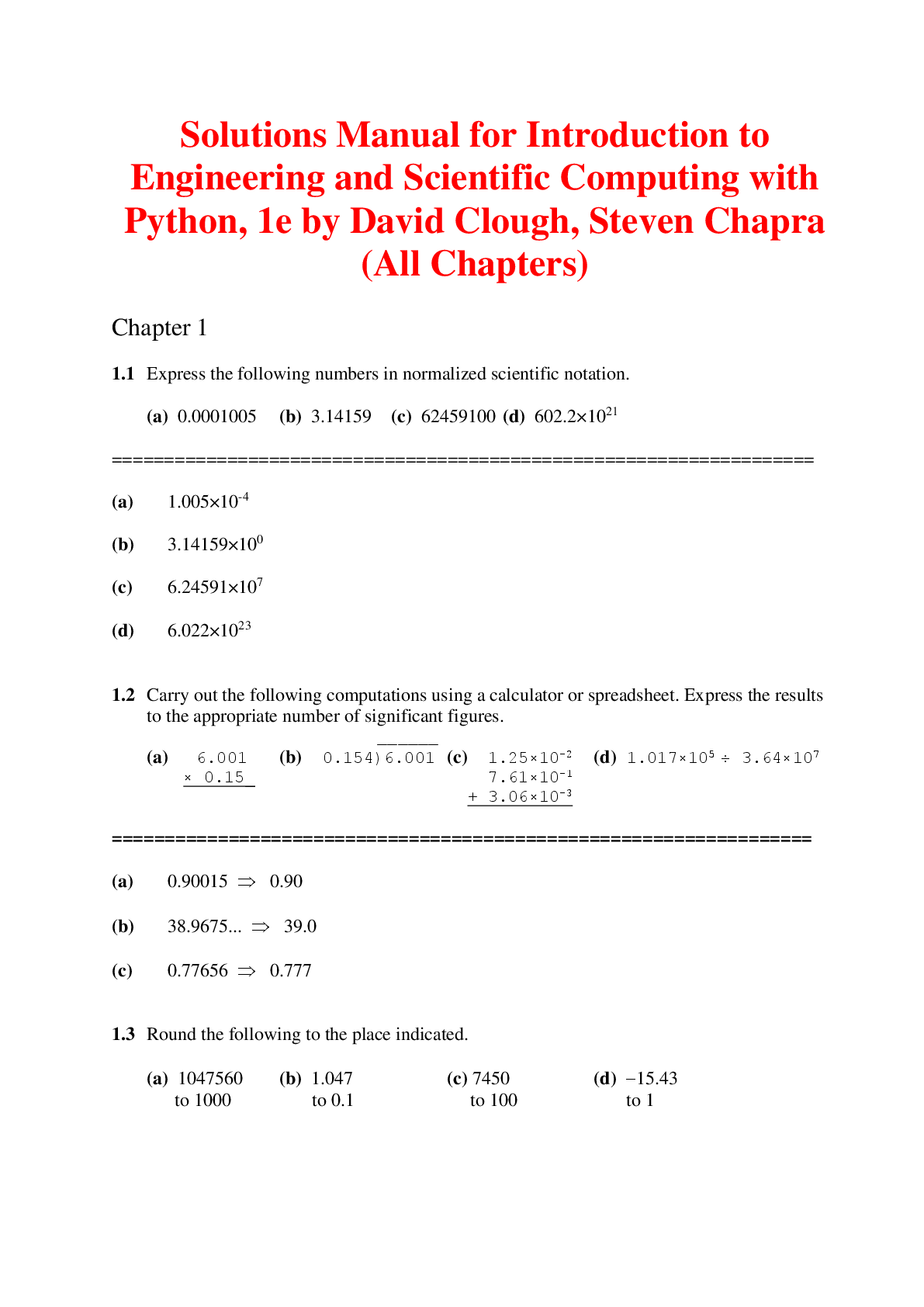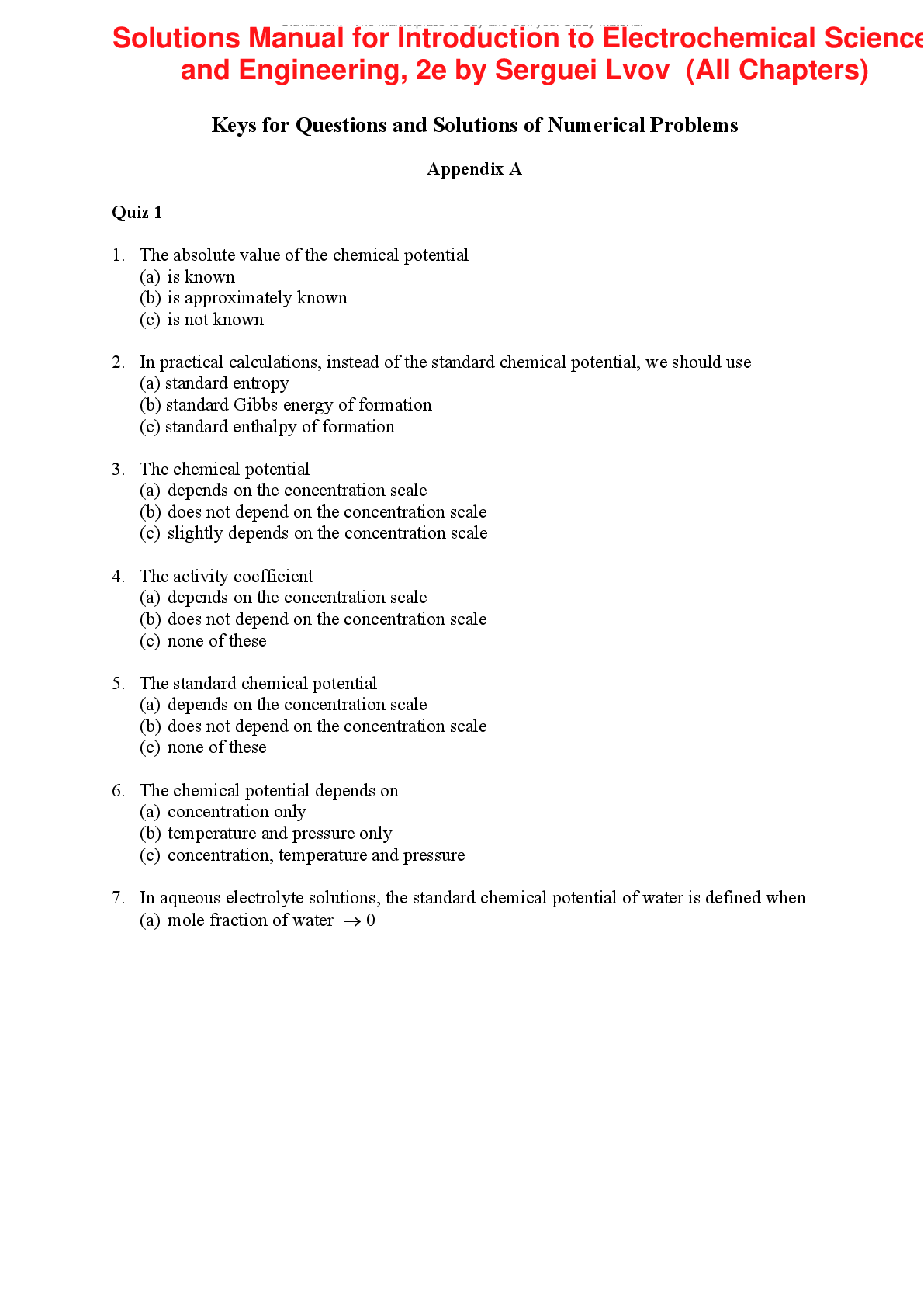English > SOLUTIONS MANUAL > Solutions for In-Class SAT Exam #3 (All)
Solutions for In-Class SAT Exam #3
Document Content and Description Below
Solutions for In-Class SAT Exam #3 Exam ID: 1817SAT #17 Solutions Section 1: Reading Test QUESTION 1 (C) This is a main idea question, so the area for this question is the entire passage. We know ... this is this area because the question says to take the passage “as a whole.” (C) is the correct answer choice because each paragraph deals with Nikhil’s “struggle to define himself.” The first paragraph details Nikhil’s efforts to change his name and select his freshman schedule. The second paragraph outlines Nikhil’s excitement at having a new name. The next paragraph explains Nikhil’s struggles in adjusting to a new name. Finally, the last paragraph explains Nikhil’s feelings regarding his parents calling him by a new name. All of these paragraphs relate to Nikhil’s efforts to define himself. (A) is incorrect because there is nothing in the passage that discusses “two parents’ acceptance of their son’s leaving home.” (B) is incorrect because “the stimulating possibilities open to a college student” are just a minor piece of the passage. They are only discussed as part of Nikhil’s struggle to define himself. (D) is incorrect because the passage is about Nikhil’s struggle to define himself. Nikhil is seeking success in the passage. He has not achieved success yet. QUESTION 2 (C) The area for this question is between lines 1-31. We know this is the area because the question clearly states that it is referring to the opening of the first paragraph, so the answer must reside within the first paragraph. (C) is correct because the opening of the first paragraph lists the steps Nikhil took to change his name. He “types out a written request,” and notifies “the registrar’s office of his name change.” Also, he gives “documents to a secretary.” (A) is incorrect because in the area it says nothing about Nikhil developing “studious habits.” (B) is incorrect because nothing in the first paragraph suggests that Nikhil has “sinister motives.” (D) is incorrect because the first paragraph does not explicitly state that Nikhil has a “lack of experience in navigating bureaucratic procedures.” Some students may assume that Nikhil has a lack of experience, but you are not allowed to assume on the test. QUESTION 3 (B) The area for this question is lines 1-23 because the previous question asks about the opening of the first paragraph and Question 5 asks about line 23, so the area for this question must be in between these areas. The correct answer is (B) because in lines 9-13, the author says that Nikhil “corrects his name in stealth…and then suddenly it is over. After so much work it is no work at all”. This description suggests that Nikhil is “surprised that his task is achieved.” (A) is incorrect because there is no indication that Nikhil is “saddened” that his work is over. (C) is incorrect because in the first paragraph, there is no indication that Nikhil feels uneasy about his new name right after changing it. (D) is incorrect because the first paragraph mentions the steps taken by Nikhil in the process of changing his name but never suggests that Nikhil felt irritated during this time. QUESTION 4 (B) The area for this question is lines 9-13 because this is where the author describes that Nikhil “corrects his name in stealth…and then suddenly it is over. After so much work it is no work at all”. This description shows that Nikhil is “surprised that his task is achieved” (the answer to the previous question. Therefore, (B) is the correct answer. (A), (C), and (D) are incorrect because lines 4-9, 54-57, and 64-65 do not show that Nikhil is “surprised that his task is achieved.” QUESTION 5 (A) The area for this question is between lines 23-31. We know this is the area because the question specifically references line 23 and the following lines provide context. (A) is the correct answer because frivolous must mean something negative in this sentence. For example, Nikhil “doesn’t tell his parents about the drawing class…in spite of the fact that his own grandfather was an artist.” He does not tell his parents because he believes that they would think the drawing class silly. This is a negative term that also means frivolous. (B) is incorrect because flippant means carefree, which, although is similar to “frivolous,” doesn’t demonstrate that his parents would view it negatively. Nikhil’s parents may believe that his drawing class is carefree, but the question asks for the meaning of frivolous as used in line 23. The question is not asking for the term that works best on this line. (C) is incorrect because sensible means wise or logical, which is something positive. (D) is incorrect because “invaluable” means incredibly useful and important. Nikhil isn’t hiding these classes from his parents because he thinks they’ll think drawing is incredibly important. If they did, then he WOULD tell them about the class. He doesn’t tell them because they specifically do not find the classes 1SAT #17 Solutions Section 1: Reading Test invaluable. Additionally, invaluable doesn’t mean the same thing as frivolous, so that also makes this choice incorrect. QUESTION 6 (D) The area for this question is between lines 1-31. The question asks about the drawing class and it is discussed in the first paragraph. (D) is the correct answer choice because Nikhil states that “At the last minute he registers for a drawing class in the evenings.” This statement indicates that he did not think out the decision thoroughly because he registered at the last minute. Thus, it suggests that “he has allowed an impulse to guide him.” (A) is incorrect because nothing in the passage suggests that he enjoys provoking his parents. If he enjoyed provoking his parents he would have told them about the drawing class, rather than keep it a secret. (B) is incorrect because nothing in the first paragraph suggests that he has inherited his grandfather’s talent. The first paragraph does not include any information on Nikhil’s drawing talent. (C) is incorrect because the passage does not include any information on Nikhil’s plans for future courses. The passage only includes information on the courses he is taking during his first semester. QUESTION 7 (D) The area for this question is between lines 21-31. At the end of paragraph one, Nikhil discusses his parents. (D) is correct because Nikhil states that “his parents expect him to be, if not an engineer, then a doctor, a lawyer….the fields that brought them to America…professions that have earned them security and respect.” This statement indicates that his parents would prefer him to pursue certain professions and believe that these “professions are more prestigious than others.” (A) is incorrect because the area does not include any information that Nikhil’s parents are concerned with whether he will enjoy certain professions or not. (B) is incorrect because the area does not contain any information to suggest that Nikhil’s parents think he plans to become an artist. (C) is incorrect because the area lists professions that Nikhil’s parents think he should pursue, but it does not indicate that they think he should pursue multiple professions. QUESTION 8 (D) The area for this question is between lines 64-87. The last paragraph is dedicated to discussing Nikhil’s thoughts regarding his parents’ use of his new name. (D) is the correct answer because Nikhil states that when his parents call him Nikhil “it troubles him.” He also states that “the substitution sounds wrong to Gogol.” These statements indicate that Nikhil “feels that it is unnatural for them to use his new name.” (A) is incorrect because Nikhil asked his parents to call him by his new name. Nikhil states that “he has asked his parents to do precisely this.” (B) is incorrect because there is not any information in the area to suggest that his parents think he should have adopted a different name. In fact, they seem comfortable calling him Nikhil. (C) is incorrect because Nikhil the area only suggests that Nikhil is uncomfortable hearing his name spoken by his parents. The area does not yield any information to suggest that he “is not used to hearing his name spoken by other people.” QUESTION 9 (C) The area for this question is between lines 64-87. (C) is correct because it indicates that his parents’ use of his new name sounds unnatural to Nikhil. He states that “the substitution sounds wrong to Gogol, correct but off-key.” The name is being pronounced correctly, but it sounds weird to Nikhil to hear his parents call him by his new name. (A) is incorrect because it is not within the correct area. (B) is incorrect because it is not within the correct area as well. (D) is incorrect because this statement is referring to Nikhil’s frustration when his mother refers to him as Gogol. He feels annoyed by her mistake rather than shocked. QUESTION 10 (C) The area for this question is between lines 82-87. The question specifically refers to line 82. (C) is correct because the word slips is referring to Ashima’s mistake in calling Nikhil by the name of Gogol. She makes a mistake and forgets his new name for a brief moment by calling him by his old name. (A) is incorrect because “slips” is referring to Ashima’s comment and not her movement. (B) is incorrect because her statement was not involuntary. She simply forgot his name for a brief moment. (D) is incorrect because there is nothing in the area to suggest that Ashima is speaking awkwardly. QUESTION 11 (B) The area for the first question is the first two paragraphs because the question specifically mentions the first two paragraphs. The correct answer is (B) because the author 2SAT #17 Solutions Section 1: Reading Test discusses the labels attached with various animal sounds and says that the approach “takes as a given that the purpose of animal signals is communication…and that our main challenge is to decode the semantic meaning of those messages in each species.” Then, the author says that one “problem that has consistently dogged these efforts is that the same ‘word’ is used under highly varying circumstances”. The fact that the author provides factual information and also points out a problem in animal communication studies supports that he is an “informed critic.” (A) is incorrect because the author does not use a harsh or demeaning tone that would portray him as a “hostile detractor.” (C) is incorrect because the author points out a problem in animal communication studies and does not indicate that he will “convert” to or fully support the assumptions behind the studies. (D) is incorrect because the author does not indicate that he puzzled or confused in any way about the studies that he discusses. QUESTION 12 (A) The area for this question is the second paragraph because this is where the author discusses whines and growls. The correct answer is (A) because the author mentions that a basic rule of pitch is “the most universal characteristic of animal signals” and that the meanings of whines and growls were similar across the “sounds of 56 bird and mammal species”. In other words, whines and growls are sounds that “different species use in a similar manner.” (B) is incorrect because the author never says that whines and growls are used “more often by mammal than by bird species.” (C) is incorrect because the author does not say that sounds such as whines and growls “need to be studied more widely than in just 56 bird and mammal species.” (D) is incorrect because the passage never mentions etiquette in determining the use of whines and growls by humans. QUESTION 13 (C) The general area for this question is lines 19-26 because this is the area for this previous question, and Question 15 mentions line 23, so the area for this question must encompass both of these areas. The correct answer is (C) because in lines 19-24, the author says that high-pitched tones such as a dog’s whine “convey appeasement, fear, and an overall nonthreatening state” while low-pitched tones such as a dog’s growl “convey aggression, hostility, threat”, which suggests the assumption that “dogs have emotions that are expressed through a variety of tones.” (A) is incorrect because the author does not discuss that “dogs can be trained to make sounds similar to those of humans”; in fact, the author says that humans and dogs already make similar sounds likes growls (line 36). (B) is incorrect because the author never says that “dogs tend to reflect the personalities of the people with whom they live.” (D) is incorrect because the passage never compares the relative aggressiveness of dogs. QUESTION 14 (B) The area for this question is lines 12-91 because those are the areas given to use by our answer choices. Lines 19-24 show the assumption that “dogs have emotions that are expressed through a variety of tones” (the answer to the previous question). Therefore, (B) is the correct answer. (A), (C), and (D) are incorrect because lines 12-14, 40-41, and 88-91 are not related to dogs and their emotions. QUESTION 15 (A) The area for this question is lines 23-24 because this area provides the context in which “rough” is used. The correct answer is (A) because the author says that “rough” sounds convey “aggression, hostility, threat”. The association of “rough” with “aggression, hostility, threat” makes “harsh” the logical meaning of “rough” in this context. (B) and (C) are incorrect because the sounds are not described as “unfinished” or “irregular”. (D) is incorrect because it does not make sense for a dog’s sounds to be described as “vulgar”, or inappropriately profane. QUESTION 16 (D) The general area for this question is lines 23-43 because the previous question asks about line 23 and Question 18 asks about a longer string or a longer organ pipe (lines 44-45), so the area for this question in between both of these areas. The evidence for the answer, however, will only be found in one paragraph. The correct answer is (D) because in lines 31-33, the author says that “If you talk to a baby, you will find yourself naturally using a soft, high-pitched sound.” The fact that a certain pitch is used when talking to a baby suggests that “we automatically adjust pitch in response to different situations. (A) is incorrect because the author never mentions adults inducing or causing children to “imitate their tones of voice.” (B) is incorrect because the author never compares private conversations and public dialogues. (C) 3SAT #17 Solutions Section 1: Reading Test is incorrect because it is never mentioned that human pitch is patterned after those of animals. QUESTION 17 (B) The area for this question is lines 27-71. In lines 31-33 the author says if “you talk to a baby, you will find yourself naturally using a soft, high-pitched sound”, and this shows that “we automatically adjust pitch in response to different situations (the answer to the previous question). Therefore, (B) is the correct answer. (A), (C), and (D) are incorrect because lines 27-31, 54-56, and 68- 71 do not support that “we automatically adjust pitch in response to different situations.” QUESTION 18 (D) The area for this question is lines 44-46 because this is where the author refers to a longer strong or a longer organ pipe. The correct answer is (D) because the author says, “Big things make low sounds” and says immediately after that a “longer string or a longer organ pipe make lower sounds than small ones.” Because a longer string or a longer organ pipe are big and make low sounds, the author’s reference to them is made to “illustrate particular phenomena”. (A) is incorrect because the author never implies that the two objects are “very different”; in fact, it is mentioned that both of the objects “are big and make low sounds”. (B) is incorrect because the objects are used to prove the generalization made right before they are referenced (the idea that big things make low sounds). (C) is incorrect because the objects are referenced along with their size and the pitch of the sound they produced. Because the author is discussing the relationship between size and pitch at that point in the passage, the longer string or longer organ pipe do not represent a digression. QUESTION 19 (B) The area for this question is lines 90-91 because this area provides the context in which “cast” is used. The correct answer is (B) because in the passage, “Griffin’s argument is cast in a very different light”, which suggests that the argument is “delivered” or “seen” in a different light. Therefore, “presented” is most similar in meaning to “cast” in this context. (A) is incorrect because “discarded” is a definition for “cast”, but it does not make sense that Griffin’s argument is “discarded” in a different light. (C) is incorrect because “molded” is a definition for “cast”, but it does not make sense to “mold” an argument in a different light. (D) is incorrect because “directed” is not the definition of “cast” in this context. QUESTION 20 (A) The area for this question is the graph following the passage. We know this because the question specifically asks about the author’s claim regarding the graph. Answer choice (A) is correct because the hearing range of some animals does not overlap with that of others, which demonstrates some organisms’ ability to pick up tones that others cannot. Answer choice (B) is incorrect because the graph demonstrates that humans have the lowest hearing range out of those organisms, but it neither proves that humans have the greatest hearing range of these organisms or the greatest out of all organisms. Answer choice (C) is incorrect because this graph doesn’t illustrate the “importance” of anything. Answer choice (D) is incorrect because there is no mention of the volume of the sounds produced by the organism. QUESTION 21 (B) The area for this question is the graph because the question specifically mentions the graph. The correct answer is (B) because from the graph, a human’s upper limit for hearing is at 32,000 Hertz, but the porpoise can produce sounds up to 150,000 Hertz. Because an animal cannot hear a frequency of sound outside of its hearing range, this shows that “porpoises have the ability to hear sounds that humans cannot perceive.” (A) is incorrect because the graph only shows the range of sounds that animals can hear, and not the range of sounds that they can produce. (C) is incorrect because the graph supports that animals cannot hear sounds outside of their hearing range, but does not say that animals cannot communicate at all with other animals outside of their hearing range. (D) is incorrect because the graph does not say that humans have “the optimum hearing range.” QUESTION 22 (A) The area for this question is lines 7-9 because this area provides the context in which “conviction” is used. The correct answer is (A) because “conviction” can mean “judgment”, “opinion”, and “certainty”, and the author says that moralists have reflected “the conviction that the mastery of polite prose is a moral accomplishment to which we will be moved by appeals to our highest instincts.” Here, the “conviction” represents an 4SAT #17 Solutions Section 1: Reading Test “opinion,” which is similar to a “belief”. (B) is incorrect because the “conviction” is described as a view held by moralists and is not necessarily “reality.” (C) is incorrect because a presumption either assumes that something is true or is seen as arrogant behavior, neither of which applies to this passage. (D) is incorrect because the “conviction” held by the moralists is an opinion and not a “lesson.” QUESTION 23 (C) The area for this question is lines 19-21, because the area provides the context in which “progressive” is used. The correct answer is (C) because “progressive” can mean “ongoing” or “forward-thinking”, and the passage mentions a “progressive” loss of the distinction between “disinterested” and “uninterested”. In context, “progressive” means “ongoing”, which is similar in meaning to “continuing.” (A), (B), and (D) are incorrect because it does not make sense to have an “improving”, “reformist”, or “freethinking” loss. QUESTION 24 (B) The general area for this question is the third paragraph (lines 19-33) because this is where the author discusses the loss of distinction. The correct answer is (B) because in lines 19-23, the author says that “the progressive loss of the distinction” is “regrettable” and that “the fight on behalf of the distinction is a lost cause”, which shows an attitude of “resignation”, or the acceptance of something undesirable but inevitable. (A) is incorrect because the author describes the “progressive loss of the distinction” is “regrettable”, which shows that the author has an opinion about the subject and is not “indifferent.” (C) is incorrect because the author describes the loss of distinction to be “regrettable” and “a lost cause”, but this does not show that the author has feelings of resentment. (D) is incorrect because the author does not show “defiance” or any deeply negative attitude toward the loss of distinction. QUESTION 25 (B) (B) is the correct answer because lines 19-23 are where the author describes the loss of distinction as “regrettable” and the fight for it as “a lost cause”, which shows an attitude of “resignation” (the answer to the previous question). Therefore, (A), (C), and (D) are incorrect because lines 10-12, 32-33, and 51-54 give no indication of the author’s attitude towards the loss of distinction. QUESTION 26 (C) The area for this question is the entire passage. The correct answer is (C) because in the author’s discussion that “literally” is often used to mean “figuratively”, it is said, “Once the connection of literal with letter is made, the correct usage makes perfect sense. The distinction in this case is worth making.” This shows that the author would approve of modern language users who “recognize the reasons for particular usages.” (A) is incorrect because the author says that the “progressive loss of distinction” between certain words is “regrettable”, which shows that the author would not approve of those who believe that “meanings of words are purely arbitrary”. (B) is incorrect because the author mentions in the fourth paragraph that “you know” is easily understood in private conversations but more unclear in public conversations; however, this does not mean that the author approves of treating public conversation as if it were private. (D) is incorrect because although the author says that “the fight on behalf of the distinction is a lost cause” and that the loss is “regrettable”, they would not likely approve of those who consider the “natural drift” of language to be inescapable. QUESTION 27 (A) The area for this question is the fourth paragraph (lines 34-54) because the question asks about early grammarians, who are mentioned in the fourth paragraph. The correct answer is (A) because the author mentions that “new social conditions call for attention to aspects of language to which early grammarians were indifferent”, and lists the spoken language as an example of one such social condition. The, the author says, “I am struck by the misuse of such expressions only when I am listening to public discourse”, giving television interviews as an example. This example of modern causes of “the misuse of such expressions” suggests that early grammarians would not have been concerned with “the abuse of the spoken language in public discourse.” (B) is incorrect because the author never suggests that early grammarians were not faced with “declining moral values.” (C) is incorrect because the author does not say that early grammarians did not have to concern themselves with “new and fascinating word meanings.” (D) is incorrect because the author does not mention that 5SAT #17 Solutions Section 1: Reading Test “conflicting rules of usage” were not relevant for early grammarians. QUESTION 28 (D) The area for this question is the whole passage. The correct answer is (D) because in lines 23-24 the author says regarding the loss of distinction between words, “I would not want to claim that there are no improprieties worth bothering about”, which suggests the opinion that “changes in the language ought to be questioned.” (A) is incorrect because the author focuses on the meanings of words and does not mentions that “rules of grammar define usage.” (B) is incorrect because the author’s emphasis on preserving the distinct meanings of words such as in lines 19-23 shows that the author is a traditionalist and would not likely think that “opinions of traditionalists should be largely discounted.” (C) is incorrect because the author mentions “the mastery of polite prose” (lines 7-8) in relation to moralists, but this does not indicate that the author himself believes that “the study of polite prose is a moral accomplishment.” QUESTION 29 (B) The area for this question is lines 13-54. The author says “Nevertheless, I would not want to claim that there are no improprieties worth bothering about”, which suggests a belief that “changes in the language ought to be questioned” (the answer to the previous question). Therefore, (B) is the correct answer. (A), (C), and (D) are incorrect because lines 13-15, 45-47, and 51-54 do not give evidence for the idea that “changes in the language ought to be questioned.” QUESTION 30 (B) The area for this question is the fourth paragraph because the question specifically asks about the fourth paragraph. The correct answer is (B) because in public discourse, the author says that what “is otherwise a natural appeal to a shared background is distressing because we do not know who the speakers are, as we do in face-to-face conversation, and we cannot ask them for clarification” (lines 47-51), which shows that “he is unable to personally confront the speaker for an explanation.” (A) is incorrect because the author never says that “television shows do not conduct interviews very well.” (C) is incorrect because the author says that what “is otherwise a natural appeal to a shared background is distressing” due to an unfamiliarity with the speaker, but this does not mean that “sharing background and personal information is a source of stress.” (D) is incorrect because the author says that greater awareness in public forums “makes us better listeners” but not necessarily that “television interviews promote better listeners.” QUESTION 31 (B) The area for this question is the table because the question specifically mentions the table. The correct answer is (B) because from the chart, it can be seen that the number of words added to the English language dropped from the 17th to the 18th century but increased again from the 18th to the 19th century. In other words, the number of words added to the English language “experienced a dip between the 17th and 19th century.” (A) is incorrect because an all-time peak in the 17th century would mean that this century had the highest amount of words added to the English language; however, it can be seen that the 19th century actually had more words added to the English language. (C) is incorrect because the chart shows a dip in the number of words added between the 17th and 19th century, which means that the number of words added did not rise steadily from the 15th century to the 20th century. (D) is incorrect because the chart shows that the number of words added to the English language rose from the 12th century to the 13th century, so the number of words added did not decline “drastically” during the 13th century. QUESTION 32 (B) The area for this question is the graph because the question specifically mentions the graph. The correct answer is (B) because from the chart, the number of words added to the English language rose from the 12th century to the 17th century, dropped in 18th century, rose back up in the 19th century, and dropped again in the 20th century; therefore, there was “no significant pattern in the number of words added every century.” (A), (C), and (D) are incorrect because the chart shows neither a “predictable pattern”, a “steady, noticeable increase”, nor “a steady, noticeable decrease” in the number of words added every century. QUESTION 33 (D) The general area for this question is all of Passage 1 because the question asks for the author’s attitude toward anti-technologists, which could be expressed throughout 6SAT #17 Solutions Section 1: Reading Test the passage. The correct answer is (D) because in lines 22-23, the author says that that the “anti-technologists discount completely the integrity and intelligence of the ordinary person”. The author’s declaration that antitechnologists “completely” discount the integrity and intelligence of people suggests a critical attitude towards them. (A) is incorrect because the author mentions that anti-technologists “discount completely the integrity and intelligence of the ordinary person”, which shows his opposition to their ideology and shows that he does not feel sympathetic towards their arguments. (B) is incorrect because the author clearly shows a negative attitude toward anti-technologists; therefore, he would not be “indifferent” toward them. (C) is incorrect because the author declares that “pity and disdain for the individual citizen are essential aspects of anti-technology” (lines 24- 25) and that the anti-technology dogma “that technological society forces people to consume things that they do not really desire” (lines 26-27) is a “falsehood.” In other words, the author takes on a serious attitude in discussing anti-technologists and would likely not adopt an “amused” tone. QUESTION 34 (B) (B) is the correct answer because it is in lines 22-23 that the author mentions that “anti-technologists discount completely the integrity and intelligence of the ordinary person”, which shows that the author’s attitude towards the anti-technologists is best described as “critical” (the answer to the previous question). Therefore, (B) is the correct answer. (A), (C), and (D) are incorrect because lines 8-9, 25-27, and 28-32 objectively present facts and give no evidence that the author is critical of antitechnologists. QUESTION 35 (A) The area for this question is lines 1-2 because this area provides the context in which “treat” is used. (A) is the correct answer because the passage describes that antitechnologists “treat technology as something that has escaped from human control”, and in this context, “treat” is most similar to “regard”. (B) is incorrect because it does not make sense to “pamper” technology. (C) is incorrect because the anti-technologists do not “administer” technology. (D) is incorrect because it does not make sense to “deliberate” technology. QUESTION 36 (C) The area for this question is lines 17-21 because this area provides the context in which “sober” is used. The correct answer is (B) because in contrast to the idea that “technological advance seems to be independent of human direction”, the author says that “sober thought reveals that technology is not an independent force…but merely one of the types of activities in which people engage.” The idea of “sober thought” revealing a more realistic view of technology shows that “sober” essentially means “sensible.” (A) is incorrect because the “sober” view of technology is not described as necessarily being “plain and uncomplicated.” (B) is incorrect because “sober” does not logically mean “not intoxicated” in context. (D) is incorrect because the “sober” thought is not described as being “unimaginative.” QUESTION 37 (A) The area for this question is the entire passage because the author discusses refrigerators throughout the passage. The correct answer is (A) because the author says that a refrigerator “stores food (a necessity) and cools drinks or produces ice for cooling drinks (a comfort or luxury)” (lines 54-56), and then says that the “desirability of cold beer, for example is culturally or socially induced” (lines 57-58). Here, the author essentially says that in much of the United States, a refrigerator is an “appliance that has both essential and culturally determined functions.” (B) is incorrect because the author says that “storage in a refrigerator becomes essential to living. It is a necessity induced by life-style over which individuals have little control” (lines 69-72). The “life-style over which individuals have little control” suggests that the refrigerator does not necessarily allow “individuals to pursue different lifestyles.” (C) is incorrect because the passage never mentions the affordability of the refrigerator in the United States. (D) is incorrect because the author says that at a supermarket, one “buys for a week of eating…so storage in a refrigerator becomes essential to living” (lines 68-70), which shows that the refrigerator is tied strongly to “a social institution such as the supermarket.” QUESTION 38 (A) (A) is the correct answer because lines 54-58 are where the author says that a refrigerator “stores food (a necessity) and cools drinks or produces ice for cooling [Show More]
Last updated: 2 years ago
Preview 1 out of 27 pages
.png)
Buy this document to get the full access instantly
Instant Download Access after purchase
Buy NowInstant download
We Accept:

Reviews( 0 )
$11.00
Can't find what you want? Try our AI powered Search
Document information
Connected school, study & course
About the document
Uploaded On
Jul 28, 2021
Number of pages
27
Written in
All
Additional information
This document has been written for:
Uploaded
Jul 28, 2021
Downloads
0
Views
161



